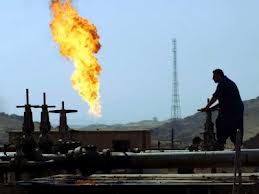The oil market never fails to find reasons for its volatility. The failure of the April 17 Doha meeting between Opec and non-Opec producers to freeze production at January 2016 levels immediately sent oil prices sharply down.
However, the market just as quickly moved upward on supply outages, especially due to the oil workers’ strike in Kuwait, which was reported to remove 1.3 million barrels a day (mbd) from the market. Brent prices rose to $45.80 (Dh168) a barrel on April 20 only to fall the second day to $44.53 a barrel.
At the same time pipeline problems in Nigeria removed another 0.44 mbd and 0.15 mbd was removed from Iraqi exports from Kirkuk as the dispute between Baghdad and Kurdish regional authorities continued, in addition to it being the North Sea fields’ maintenance season.
But these outages are transient and the Kuwait strike is already over and production is up and going. Therefore, the supply glut in the market is still there and is likely to cause further downward correction if things stay as they are.
The oil market has been riding on positive expectations since February 16, when Saudi Arabia and Russia agreed to freeze production at January levels. The price of the Opec reference basket of crude rose from $29.35 a barrel to $40.11 on April 20. But the ride was bumpy and the price level depended on how positive or negative the daily statements were from market participants.
Iran factor
While the failure of the Doha meeting was expected due to the entrenched positions of Saudi Arabia and Iran, the market kept hoping for a solution by the time the meeting convened. There was no solution as Iran declined to attend the meeting to start with and Saudi Arabia insisted there would be no freeze in production unless Iran agrees to be a part of it.
But the use of positive statements to talk the market up or to stabilise it is already on again. While some Saudi officials threatened to raise production, Ebrahim Muhanna, adviser to the Saudi oil minister, said in a conference in Paris on April 21 that in spite of the Doha failure, cooperation is still possible and it is certain that more discussion will be forthcoming at the next Opec meeting in June.
Similarly, the Nigerian oil minister said he will hold talks with Saudi Arabia, Iran and other producers in the hope of reaching an agreement at the next meeting.
Russia has already said it will raise production to historical levels in 2016 prompted by the Saudi statements to raise production. And the Nigerian minister will also try to bring everyone back to the fold and warned that failure will encourage more producers to drown the market with increased oil production.
Non-Opec production
Support came from the International Energy Agency (IEA) when it said in its latest Oil Market Report that the market would be tightening by the end of the year and that should support higher prices. It also said that “the oil market looks set to move close to balance in the second half of this year”.
Reports suggest that non-Opec production is decreasing faster than anticipated and that the fall this year is likely to 0.73 mbd according to Opec.
With respect to tight oil production in the US, the IEA said that “There are signs that the much-anticipated slide in production of light, tight, oil in the US is gathering pace.”
Even then, stocks are rising around the world. And the latest numbers reported for the US by the Energy Information Administration (EIA) is that crude oil stocks rose by 6.6 million barrels between April 1 and 8 to a historic level of 536.5 million barrels, or 11 per cent higher than a year ago and more than 100 million barrels over the five-year average. Fearing that tank space around the world is running out and tankers on the sea are full, Bob Dudley, the BP boss, recently joked that swimming pools could be used to store oil.
Good news
US oil production is reported to be falling to 8.97 mbd in the first week of April, the lowest level since October 2014, as reported by EIA. This is well below the maximum of 9.7 mbd reached in April 2015. The average 2016 is now expected at 8.6 mbd and that of 2017 at 8 mbd. Good News for market share seekers and oil prices.
But let us not kid ourselves. Without a serious attempt to at least freeze production by Opec and other producers, the increase in Opec production and Russia is likely to be more than the declines cited above. And prices are likely to suffer more volatility at levels below the current prices.
(*) The writer is former head of the Energy Studies Department at the Opec Secretariat in Vienna.
Source: Gulf News. Published: 12:19 April 24, 2016
http://gulfnews.com/business/analysis/only-a-freeze-on-oil-production-matters-any-more-1.1809943








Comment here